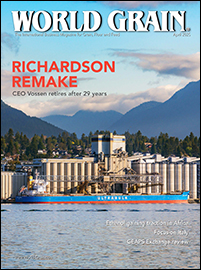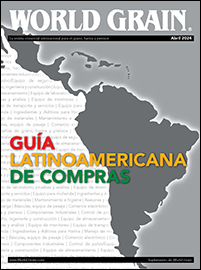GENEVA, SWITZERLAND — A top-level United Nations (UN) conference has, for the first time, laid the foundations for practical and proactive national drought policies to increase resilience to the world’s most destructive natural hazard, which is being aggravated by climate change.
The High-level Meeting on National Drought Policy marked the first globally-coordinated attempt to move towards science-based drought disaster risk reduction and break away from piecemeal and costly crisis-response, which often comes too late to avert death, displacement and destruction.
The meeting issued a declaration encouraging governments to develop and implement national drought management policies consistent with their development objectives. It also provided detailed scientific and policy guidance on how to achieve this.
“Prevention must be our priority,” said U.N. Secretary-General Ban Ki-Moon in a message to delegates. “Nations need urgently to develop strategies for resilience — especially for the poor, who are always hit first and worst.”
The meeting March 11-15 was organized by the World Meteorological Organization (WMO), the Food and Agriculture Organization of the United Nations (FAO) and the UN Convention to Combat Desertification (UNCCD) and other partners. It brought together more than 300 government decision-makers, development agencies, and leading scientists and researchers.
Brigi Rafini, prime minister of Niger, which has suffered from repeated droughts, chaired the high-level segment, which was addressed by more than 20 ministers.
“We have taken a major stride towards more proactive drought policies to protect lives and livelihoods. This is the first global dialogue on national drought policies and it has shown that we have the knowledge, we have the experience, and we have the determination to reduce the unacceptably high human and economic toll of drought,” said WMO Secretary-General Michel Jarraud.
“Building resilience to drought is not only a mitigation measure, but a smart investment with guaranteed high return. Post-disaster relief is way costlier than drought preparedness and risk management. Therefore, we call on governments and all stakeholders in drought-prone countries to engage in developing their national drought policies and we are ready to support them,” said UNCCD Executive Secretary Luc Gnacadja.
It has been estimated that droughts are the world’s costliest natural disaster, accounting for $6-$8 billion dollars annually, and impacting more people than any other form of natural disaster. Since 1900, over 11 million people have died as a result of droughts, and 2 billion people have been affected. The frequency, intensity, and duration of droughts are expected to rise as a result of climate change, with an increasing human and economic toll.
Since the 1970s, the land area affected by drought has doubled, undermining livelihoods, reversing development gains and entrenching poverty among millions of people who depend directly on the land. Women, children and the aged often pay the heaviest price.
Recurrent drought waves in vulnerable regions of Africa have attracted global attention because of the famines and massive social and economic disruptions. Drought in the Sahel reduced cereal production by 26% in 2012 as compared to 2011. The situation remains critical, with over 10 million people still food insecure and 1.4 million children at risk of acute malnutrition.
But drought affects other regions as well, as witnessed in recent years in the United States, Russia, Europe, India, Brazil and Australia, wreaking havoc on food supplies worldwide.
Presentations at the meeting showed that proactive drought management planning is now possible following major advances in science and technology, and knowledge about sustainable land management. Varied innovations also exist for national and regional drought monitoring, early warning systems, risk-based responses as well as mitigation and coping strategies.
The meeting issued a consensus declaration stressing the need for national drought management policies. Specifically, it encouraged governments to:
• Develop proactive drought impact mitigation, preventive and planning measures, risk management, fostering of science, appropriate technology and innovation, public outreach and resource management as key elements of effective national drought policy.
• Promote greater collaboration to enhance the quality of local/national/regional/global observation networks and delivery systems.
• Improve public awareness of drought risk and preparedness for drought.
• Consider, where possible within the legal framework of each country, economic instruments, and financial strategies, including risk reduction, risk sharing and risk transfer tools in drought management plans.
• Establish emergency relief plans based on sound management of natural resources and self-help at appropriate governance levels.
• Link drought management plans to local/national development policies.
• Better drought management is one of the priorities of the Global Framework for Climate Services (GFCS) now being implemented by governments with support from the United Nations. Climate services aim to increase drought resilience by improving climate information and services, especially for the most vulnerable. They will build on fast improving climate prediction capabilities.
The GFCS aims to give global access to improved services for four initial priority sectors – food security and agriculture, water, health and disaster risk reduction – by the end of 2017.
Outcomes of the high-level meeting will also be transmitted to the UNCCD Conference of Parties to be held in September. Its last conference in 2011 took a decision to formulate an advocacy policy framework on drought, taking gender-sensitive approaches into account.





